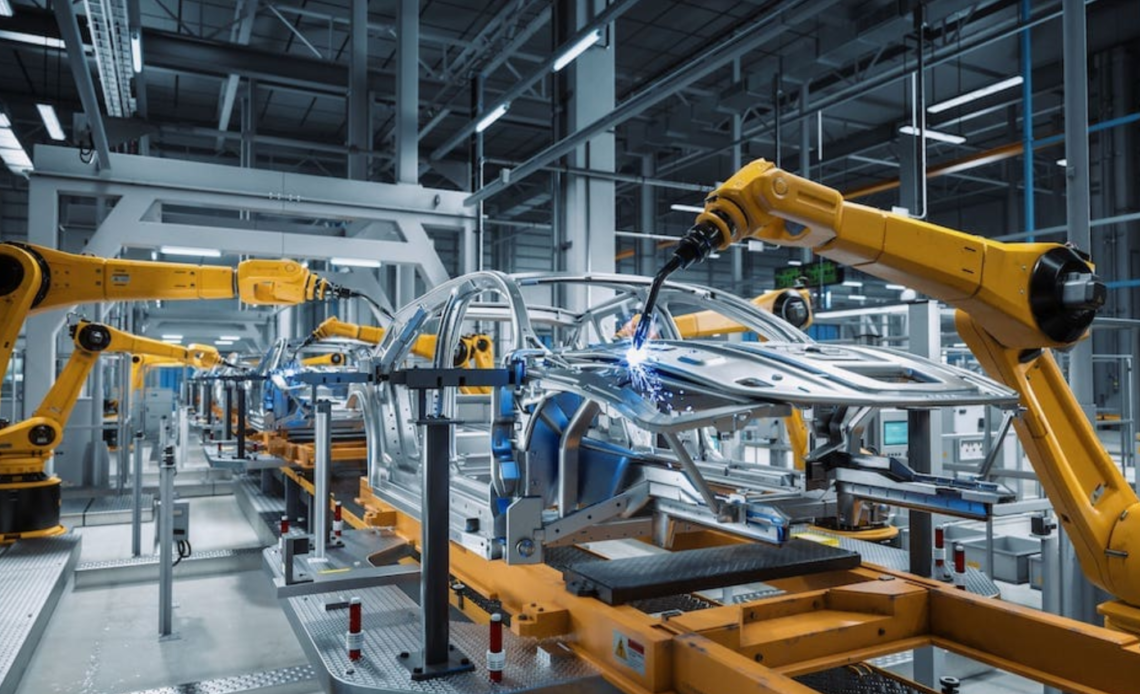
Robotic arms have become an essential part of modern manufacturing, transforming the way industries operate by introducing high levels of efficiency, precision, and adaptability. The versatility of these robot arms allows them to perform a wide variety of tasks, making them indispensable across many sectors, from automotive to pharmaceuticals.
This article explores the adaptability of robot arms and their significant impact on manufacturing processes, highlighting how innovations in technology have expanded their capabilities and opened up new possibilities for industries worldwide.
Modern Robotic Arms that Enhance Versatility
Modern robot arms are programmed with flexible software that allows them to switch between tasks effortlessly. Unlike earlier models, which were limited by rigid, task-specific programming, today’s robotic arms can be reprogrammed quickly and efficiently. Software upgrades and intuitive programming interfaces enable manufacturers to adapt robot arms to new tasks with minimal downtime, significantly increasing production flexibility.
Precision and Adaptability
The precision and adaptability of today’s robotic arms come from advanced vision systems, sensors, and end-effectors. These systems allow robotic arms to adjust to environmental changes, detect anomalies, and complete intricate tasks. For example, robotic arms equipped with visual sensors can inspect products for quality control, identifying minor flaws or deviations in real-time and ensuring consistently high standards.
Collaborative Capabilities (Cobots)
Collaborative robots, or cobots, have transformed the way humans and robots work together on the manufacturing floor. Designed with built-in safety features, cobots can operate alongside human workers without additional safety barriers. This collaborative capability expands the roles robotic arms can play within manufacturing settings, allowing them to handle tasks that require human interaction while ensuring worker safety.
Real-Time Data and IoT Integration
With IoT (Internet of Things) capabilities, robotic arms are now connected to other systems, enabling real-time data collection and sharing. This integration allows manufacturers to monitor robotic performance, optimize processes, and make adjustments based on real-time data. By communicating with other machines and systems, robotic arms can enhance overall operational efficiency and increase productivity.
Applications Across Different Manufacturing Sectors
In automotive manufacturing, robot arms play a vital role in high-precision welding and assembly. They perform tasks that require consistent accuracy, such as placing and securing car parts. Robot arms are also used in painting and finishing, ensuring an even coating that meets quality standards while reducing waste.
Electronics and Technology
The electronics sector relies on robotic arms for miniaturized component assembly. These arms can handle delicate and tiny components, ensuring precision that would be challenging to achieve manually. Additionally, they are used in soldering and quality control processes, where accuracy is critical to prevent defects in electronic devices.
Food and Beverage Processing
Robot arms have found applications in packaging and sorting within the food and beverage industry, where they efficiently package goods and sort products for distribution. Their precision helps maintain hygiene and safety standards, as robotic arms can minimize human contact with food products, reducing the risk of contamination.
Pharmaceuticals and Medical Device Manufacturing
In pharmaceutical manufacturing, robotic arms are used for handling and packaging medicines, ensuring high standards of cleanliness and safety. They are also invaluable in inspection and quality control, using vision systems to detect inconsistencies and maintain the quality of pharmaceutical products.
Consumer Goods and E-Commerce Fulfillment
E-commerce fulfillment centers use robotic arms for picking and sorting tasks, automating inventory management and order fulfillment processes. Their versatility enables them to handle customized product assembly as well, easily adapting to produce personalized items and meet customer demands.
Benefits of Versatile Robotic Arms in Manufacturing
Robotic arms can operate continuously without fatigue, improving production speeds and reducing downtime. By working around the clock, they boost productivity and efficiency, allowing manufacturers to increase output and meet demanding schedules.
Consistent Quality and Reliability
Automation with robotic arms ensures consistent quality in products. Unlike human workers, who may vary in performance over time, robotic arms maintain precision and reliability across all tasks. This consistency is particularly valuable in industries where product quality is paramount.
Adaptability for High-Mix, Low-Volume Production
For manufacturers producing a variety of products in small quantities, robotic arms provide the flexibility to handle different tasks without extensive retooling. Their adaptability allows manufacturers to switch between products seamlessly, making them ideal for high-mix, low-volume production.
Cost Savings and Long-Term ROI
Although robotic arms require a significant initial investment, they provide long-term cost savings by reducing labor costs, minimizing waste, and lowering the chance of costly errors. Over time, the productivity gains and reduced operational costs lead to a strong return on investment.
Improved Safety for Workers
Robotic arms perform tasks that may be hazardous for humans, such as handling chemicals, heavy lifting, or working in extreme temperatures. By taking on these dangerous tasks, robotic arms improve workplace safety and protect human workers from potential harm.
Conclusion
The versatility of robotic arms is reshaping modern manufacturing by enhancing productivity, precision, and adaptability. Innovations such as AI, collaborative robotics, and IoT are driving the development of robotic arms, allowing them to perform a wide range of tasks across multiple industries. The use of versatile robotic arms, such as the Universal Robotics arm, provides manufacturers with the tools needed to streamline processes, reduce costs, and maintain quality standards, making them an essential component in the future of manufacturing.








